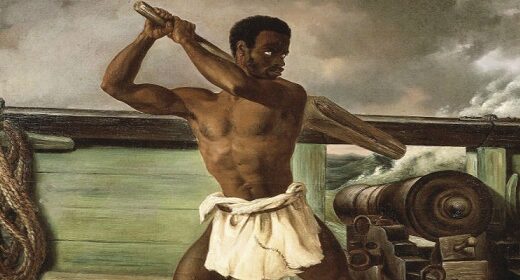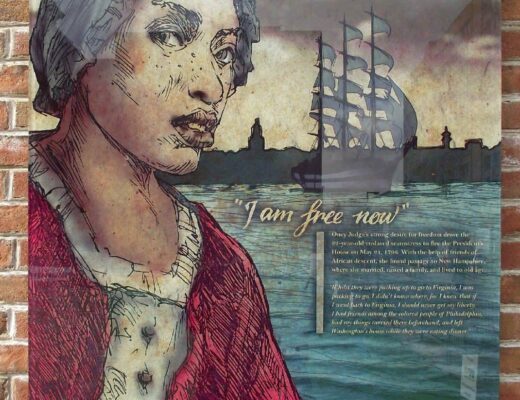Abolitionist. Civil Rights Advocate. Businesswoman. Millionaire.
When the abolitionist John Brown was hanged on Dec. 2, 1859, for murder and treason, a note found in his pocket read, “The ax is laid at the foot of the tree. When the first blow is struck, there will be more money to help.” Officials most likely believed it was written by a wealthy Northerner who had helped fund Brown’s attempt to incite, and arm, an enormous slave uprising by taking over an arsenal at Harpers Ferry in Virginia. No one suspected that the note was written by a Black woman named Mary Ellen Pleasant.
In 1901, an elderly Pleasant dictated her autobiography to the journalist Sam Davis. As Lynn Hudson writes in the book “The Making of ‘Mammy Pleasant’: A Black Entrepreneur in Nineteenth-Century San Francisco,” Pleasant told Davis, “Before I pass away, I wish to clear the identity of the party who furnished John Brown with most of his money to start the fight at Harpers Ferry and who signed the letter found on him when he was arrested.” The sum she donated was $30,000 — almost $900,000 in today’s dollars.
Pleasant lived her life between the lines of legitimacy and infamy, servitude and self-invention. She became known throughout San Francisco as Mammy Pleasant, because of the years she spent as a domestic servant. Yet she was also, incredibly, a former slave who became a millionaire. Add to that improbable pairing, a dedicated abolitionist, credited with being an important conductor of the Underground Railroad.
Mary Ellen Pleasant was born around 1814, some say on a Georgia plantation. In her autobiography, however, she stated that her mother was a “full-blooded Negress from Louisiana” and her father was Hawaiian, and she insisted she had been born in Philadelphia. She was sent to Nantucket, Mass., at a young age to live with a family as a domestic servant. Burning with ambition, she saw servant work as temporary. She turned life in a wealthy New England home into a kind of finishing school. “I often wonder what I would have been with an education,” Pleasant said in her autobiography. “I have let books alone and studied men and women a good deal. … I have always noticed that when I have something to say, people listen. They never go to sleep on me.”
Pleasant married twice. Her first husband, James Henry Smith, was either white or of mixed ancestry; historians aren’t sure. He died sometime in the 1840s, leaving his young wife a considerable inheritance. Her second marriage was to a black man named John Pleasant, whom her biographers believed she met in New Bedford, Mass., a destination on the Underground Railroad.
In 1848, the California Gold Rush began and word soon spread that Blacks were free to seek their fortune on the West Coast. She moved to San Francisco and found work as a cook. She eavesdropped on the wealthy people she served, and using the information, invested bits of her inheritance. “It’s quite possible that the jobs she had as a domestic were a cover that she was using because she clearly made her money from investments,” Hudson, the biographer, said in an interview.
Her portfolio grew to include shares in businesses that ranged from dairies and laundries to Wells Fargo Bank. She owned restaurants and boardinghouses, which locals whispered were actually brothels. In the 1890 census, she stated that she was a “capitalist” by profession. “One of the reasons that she’s not known to students of U.S. history and Americans is because a lot of the activities that she was involved in were either controversial or secret,” Hudson said. “Her legacy is not the pure, selfless freedom fighter or heroine as how Harriet Tubman is described. Pleasant does not fit that mold.”
The rest of Pleasant’s life was a zigzag of fortune and power, infamy and blame. She formed a decades-long business partnership, possibly romantic, with a white man named Thomas Bell. After his death, it turned out that much of Pleasant’s portfolio, including the mansion she designed and had built, were held in Bell’s name. Historians believe that the pair used his name in many of the business dealings to facilitate what surely would have been more difficult for a woman, and especially for a Black woman. Bell’s widow sued Pleasant and won control of the Bell estate. In an instant, Pleasant’s fortune was diminished.
She died in 1904. By the end of her life, she had become a famous figure in San Francisco. The local newspapers referred to her as Mammy Pleasant — a name she abhorred. She told The San Francisco Call: “I don’t like to be called mammy by everybody. Put that down. I am not mammy to everybody in California. I got a letter from a minister in Sacramento. It was addressed to Mammy Pleasant. I wrote back to him on his own paper that my name was Mrs. Mary E. Pleasant. I wouldn’t waste any of my paper on him.”
In San Francisco, there is a Mary Ellen Pleasant Day, and a Mary Ellen Pleasant Park where she is praised as the Mother of Civil Rights in California. Sixty years after her death, her gravestone was amended with a line that she had asked for on her deathbed: “A Friend of John Brown.” As Pleasant herself once put it, “I’d rather be a corpse than a coward.”
Source:
https://www.nytimes.com/interactive/2019/obituaries/mary-ellen-pleasant-overlooked.html
Learn more about Mary Ellen Pleasant:
https://en.wikipedia.org/wiki/Mary_Ellen_Pleasant
‘Black Fortunes: Black Fortunes: The Story of the First Six African Americans Who Escaped Slavery and Became Millionaires’ by Shomari Wills
You can purchase ‘Black Fortunes’ here: https://bookshop.org/shop/melaninmindscape







No Comments